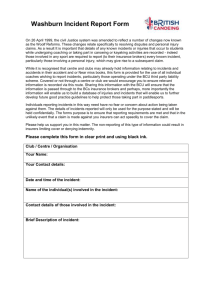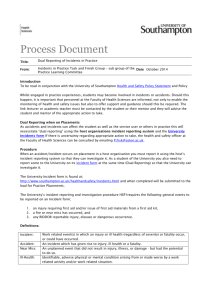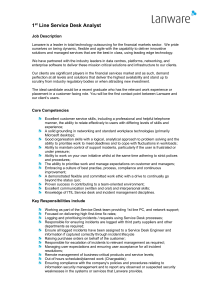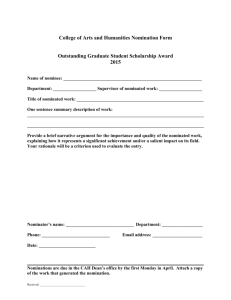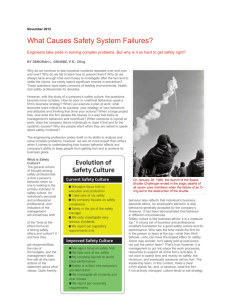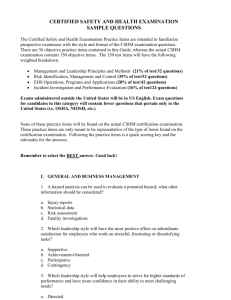Guidance for First Responders
advertisement
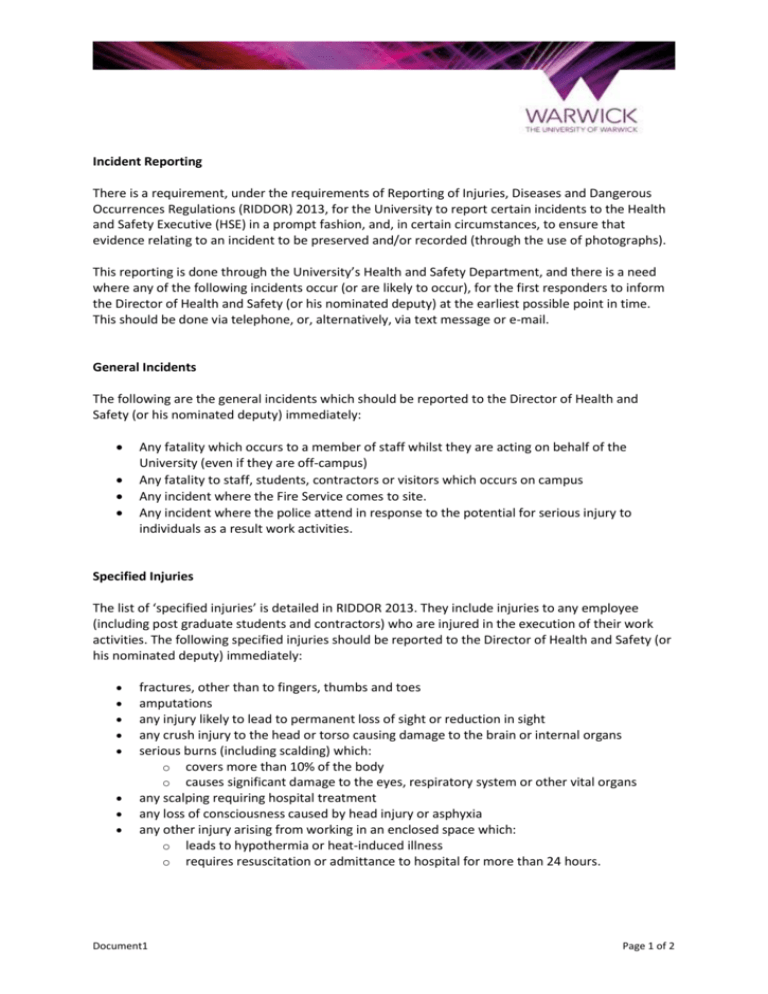
Incident Reporting There is a requirement, under the requirements of Reporting of Injuries, Diseases and Dangerous Occurrences Regulations (RIDDOR) 2013, for the University to report certain incidents to the Health and Safety Executive (HSE) in a prompt fashion, and, in certain circumstances, to ensure that evidence relating to an incident to be preserved and/or recorded (through the use of photographs). This reporting is done through the University’s Health and Safety Department, and there is a need where any of the following incidents occur (or are likely to occur), for the first responders to inform the Director of Health and Safety (or his nominated deputy) at the earliest possible point in time. This should be done via telephone, or, alternatively, via text message or e-mail. General Incidents The following are the general incidents which should be reported to the Director of Health and Safety (or his nominated deputy) immediately: Any fatality which occurs to a member of staff whilst they are acting on behalf of the University (even if they are off-campus) Any fatality to staff, students, contractors or visitors which occurs on campus Any incident where the Fire Service comes to site. Any incident where the police attend in response to the potential for serious injury to individuals as a result work activities. Specified Injuries The list of ‘specified injuries’ is detailed in RIDDOR 2013. They include injuries to any employee (including post graduate students and contractors) who are injured in the execution of their work activities. The following specified injuries should be reported to the Director of Health and Safety (or his nominated deputy) immediately: fractures, other than to fingers, thumbs and toes amputations any injury likely to lead to permanent loss of sight or reduction in sight any crush injury to the head or torso causing damage to the brain or internal organs serious burns (including scalding) which: o covers more than 10% of the body o causes significant damage to the eyes, respiratory system or other vital organs any scalping requiring hospital treatment any loss of consciousness caused by head injury or asphyxia any other injury arising from working in an enclosed space which: o leads to hypothermia or heat-induced illness o requires resuscitation or admittance to hospital for more than 24 hours. Document1 Page 1 of 2 Non-fatal accidents to non-workers (eg members of the public) Accidents to members of the public or others (including students) who are not at work must be reported if they result in an injury and the person is taken directly from the scene of the accident to hospital for treatment to that injury. Examinations and diagnostic tests do not constitute ‘treatment’ in such circumstances. There is no need to report incidents where people are taken to hospital purely as a precaution when no injury is apparent. Dangerous Occurrences The following are Dangerous Occurrences which also need to be reported to the Director of Health and Safety (or his nominated deputy) immediately: The collapse, overturning or failure of any load-bearing part of any lifting equipment, other than an accessory for lifting The complete or partial collapse (including falling, buckling or overturning) of a substantial part of any scaffold The unintentional collapse or partial collapse of any structure, which involves a fall of more than 5 tonnes of material; or any floor or wall of any place of work Any damage to, accidental or uncontrolled release from or inrush of anything into a pipeline or the failure of any pipeline isolation device The failure of any Pressure system, including protective devices or of any associated pipework Any plant or equipment unintentionally coming into contact with an uninsulated overhead electric line Any electrical short circuit or overload causing explosion or fire Any unintentional fire, explosion or ignition The sudden, unintentional and uncontrolled release of a flammable liquid or a flammable gas The unintentional release or escape of any substance which could cause personal injury to any person other than through the combustion of flammable liquids or gases. Any incident which results or could have resulted in the release or escape of a biological agent likely to cause severe human infection or illness The malfunction of any equipment used in fixed or mobile industrial radiography, the irradiation of food or the processing of products by irradiation The malfunction of breathing apparatus where the malfunction causes a significant risk of personal injury. Document1 Page 2 of 2

